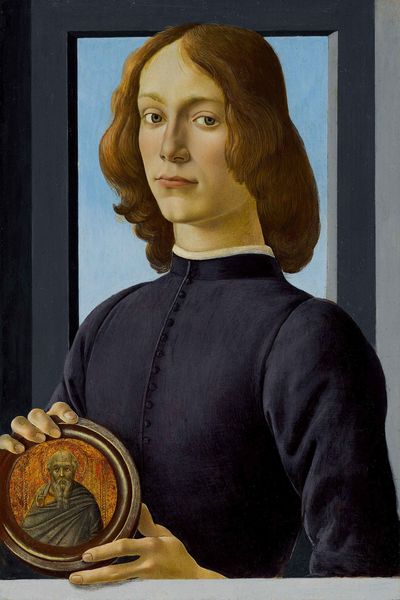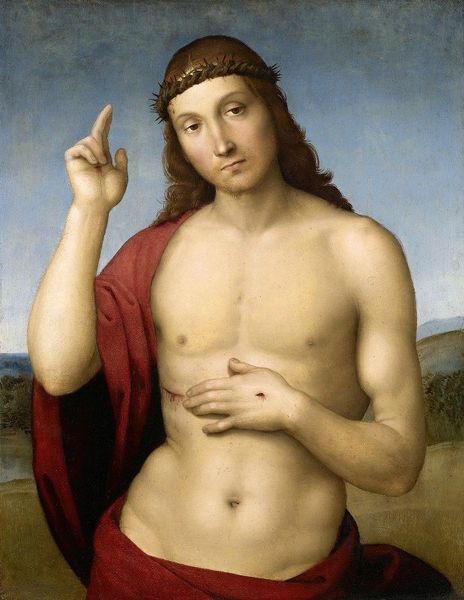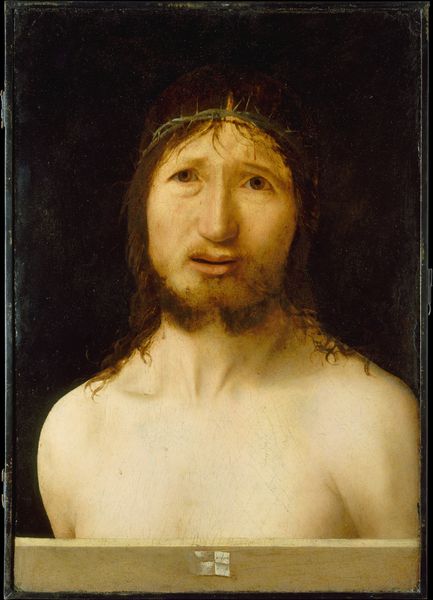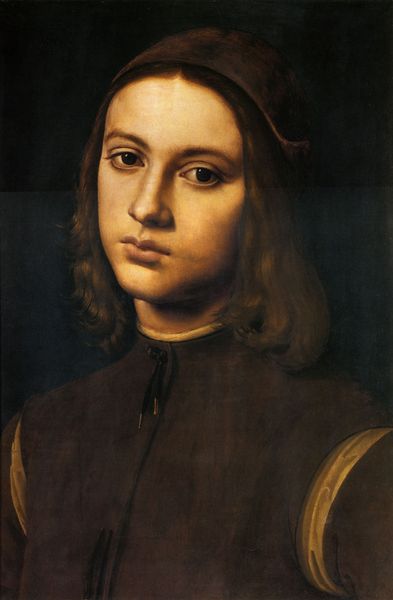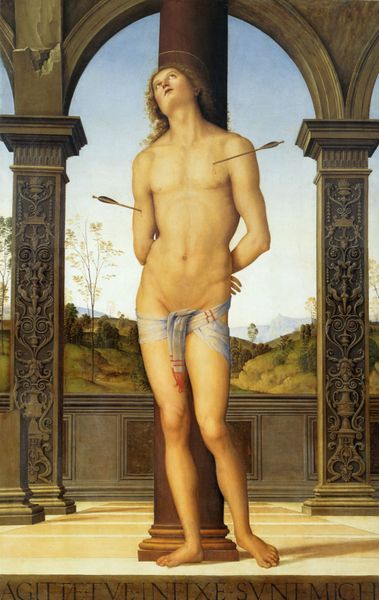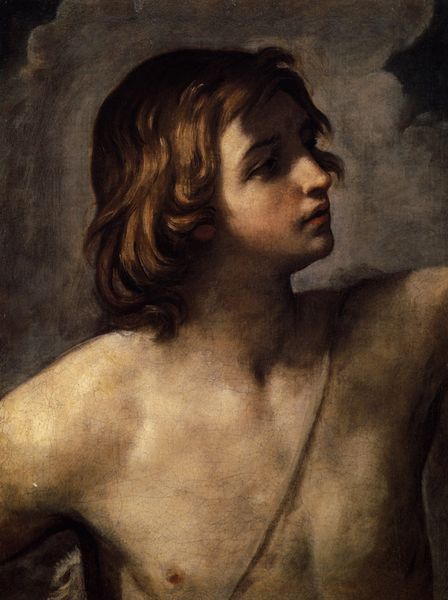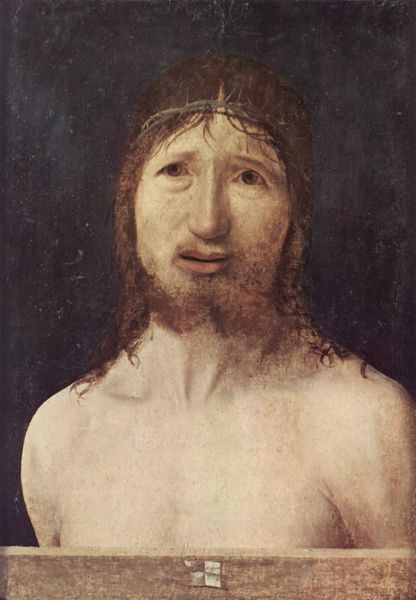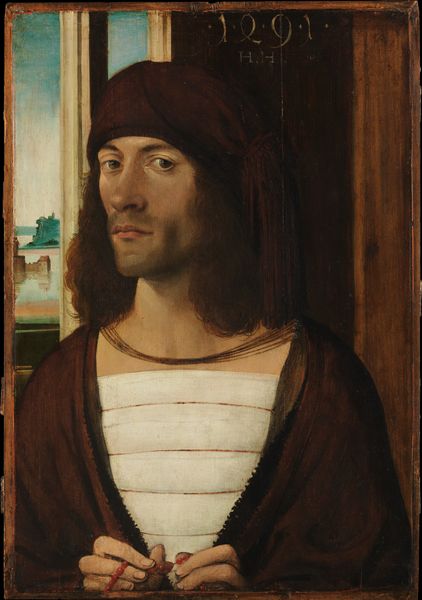
painting, oil-paint
#
portrait
#
portrait
#
painting
#
oil-paint
#
figuration
#
11_renaissance
#
12_15th-century
#
history-painting
#
facial portrait
#
italian-renaissance
#
realism
Dimensions: 49.5 x 35.2 x min. 0.4 cm
Copyright: Public Domain
Curator: This is Antonio de Saliba's "St. Sebastian at the Column," likely painted between 1475 and 1500. You'll find it in the Städel Museum's collection. Editor: The immediate impression is one of melancholy stillness. There's a striking juxtaposition of the figure’s smooth skin with the brutal arrows. The tonal range is quite limited. Curator: Absolutely. St. Sebastian was often depicted during times of plague as a symbol of resilience, interceding on behalf of the afflicted. His idealized beauty also made him a favorite subject in the Renaissance, embodying a mix of classical ideals and Christian martyrdom. The prevalence of this artwork highlights the ever-present influence that religious iconography played for art commissioners in this era. Editor: It is this almost sculptural quality of the figure that draws my attention. Notice how the soft, diffuse light accentuates the gentle curve of his chest, the turn of his head. It's a study in idealized form. The way his hair seems so casually draped is at odds with the torturous premise of the portrait. Curator: That juxtaposition is key to understanding the work. The artist walks a fine line between celebrating human beauty and reminding us of suffering and sacrifice. How art shaped its relationship to civic duties as well as what was popular to portray remains ever-important to its narrative, and his legacy. Editor: And there is something captivating in the composition too. The arrows, acting almost as pointers, keep dragging our eye back to that central figure. One reads of Renaissance formality. A measured beauty. Curator: Ultimately, "St. Sebastian at the Column" presents a complex interplay between religious devotion, societal anxieties, and artistic ideals that shaped Renaissance society. Editor: Indeed, it makes me reflect on the power of rendering fragility and quiet resilience. The use of such minimal art devices gives an even more striking effect.
Comments
No comments
Be the first to comment and join the conversation on the ultimate creative platform.



